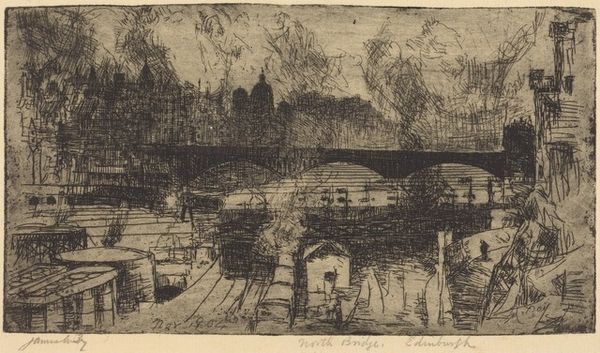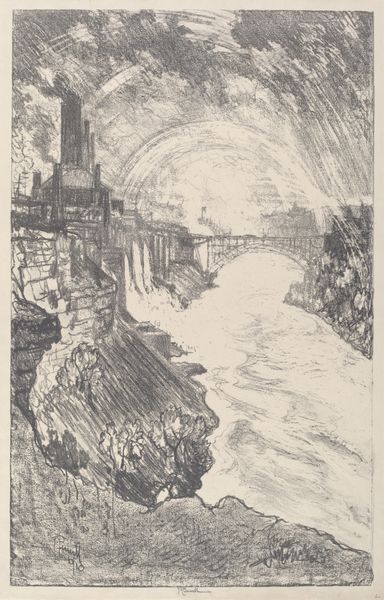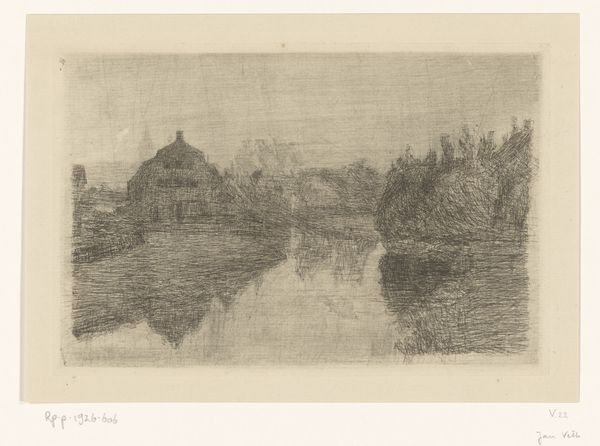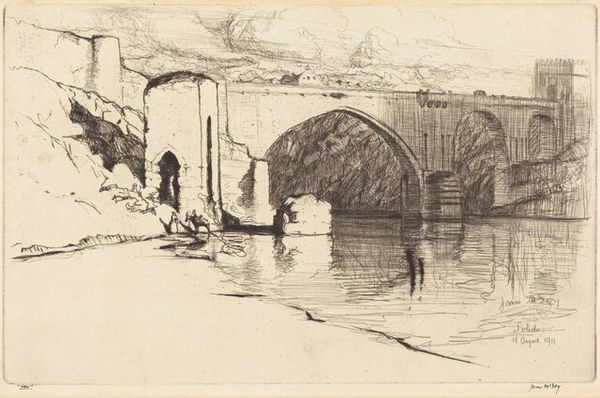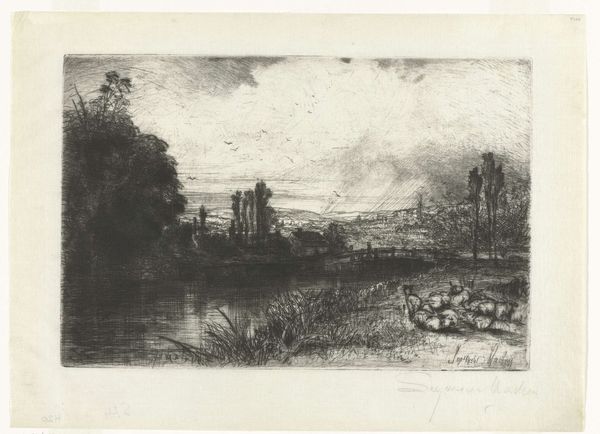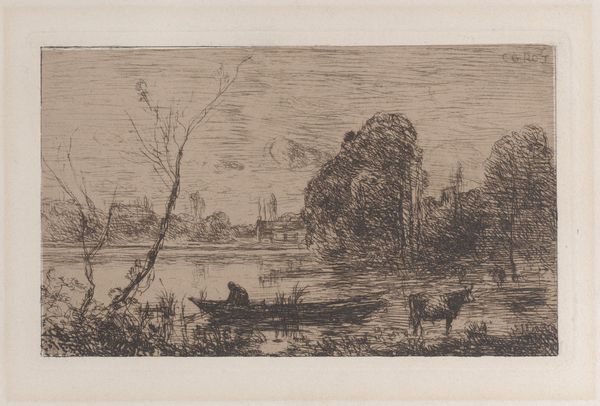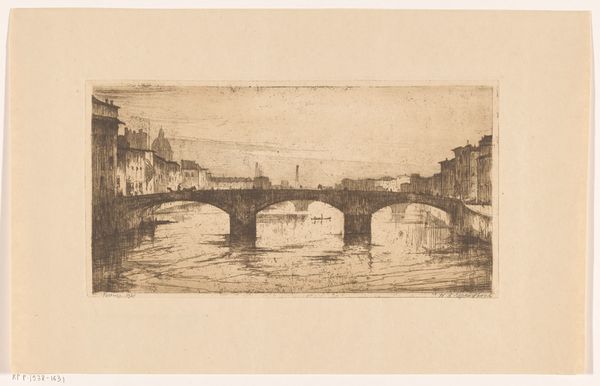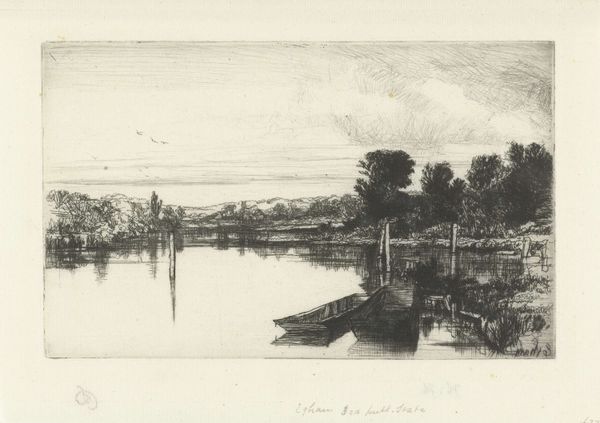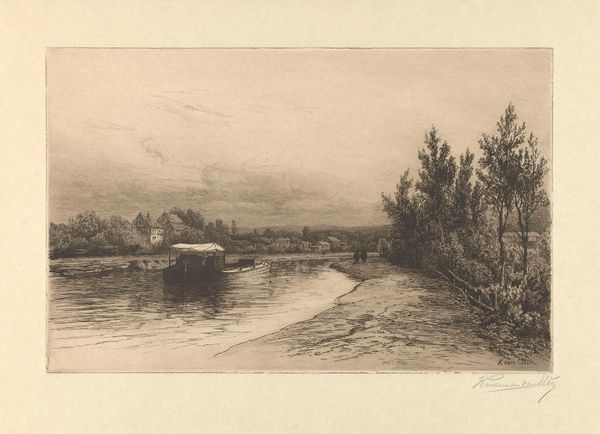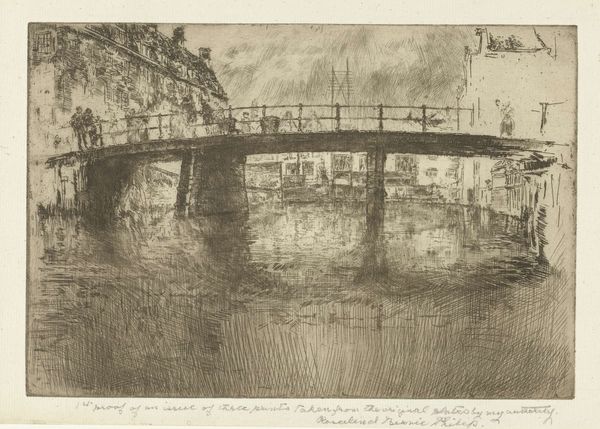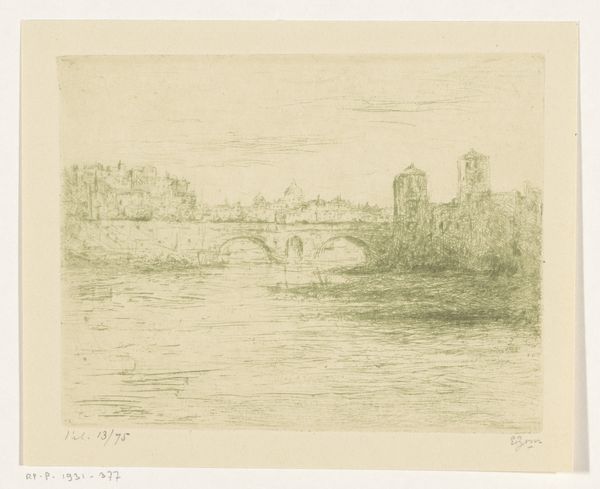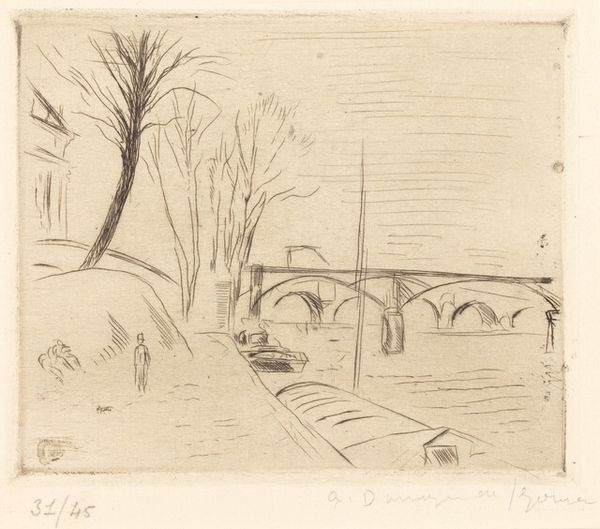
Dimensions: plate: 13.65 × 19.84 cm (5 3/8 × 7 13/16 in.) sheet: 24.92 × 32.39 cm (9 13/16 × 12 3/4 in.)
Copyright: National Gallery of Art: CC0 1.0
Editor: This is Lester George Hornby’s “La Marne à Château-Thierry,” created in 1912. It's an etching, a print, giving it a somewhat ghostly quality. I find the landscape intriguing; it almost feels like looking at a memory, hazy and indistinct. What strikes you most when you look at this piece? Curator: Hazy, indeed! It's as if Hornby captured the soul of a fleeting moment rather than a photorealistic rendering. This etching whispers stories, doesn’t it? The lines create this luminous atmosphere, and they make me wonder... What was he trying to say about time? Was it that everything flows and changes like the river Marne, so what we seize today is soon a memory? What if, in etching these scenes of peace he wasn’t consciously aware that two years later that place, La Marne, would change irrevocably, with trenches scarring the fields of northern France? The sun's radiant effect hints, to me, at both optimism and something… unknowable. What about you, do you pick up that tension at all? Editor: I do now! I was focused on the technique at first, but hearing your interpretation about capturing a specific fleeting pre-war moment really adds depth. Curator: And notice the stark lines themselves? Almost like an obsessive-compulsive memory recall, digging deeper and deeper with those lines – maybe that's why they look like sunbeams! He has built the scene out of shadows, from light, revealing how our minds fill the empty spaces of a recollection with emotional color. Editor: It’s interesting to think about it not just as a snapshot but as a deeper reflection on time, and memory, like you mentioned. Thanks for opening my eyes to the symbolism hidden within this etching! Curator: Anytime! I must admit, seeing it through your perspective has refreshed my interpretation of his visual poetry, also. Art’s a constant dialogue; our own experiences breathe life into these historical objects.
Comments
No comments
Be the first to comment and join the conversation on the ultimate creative platform.

